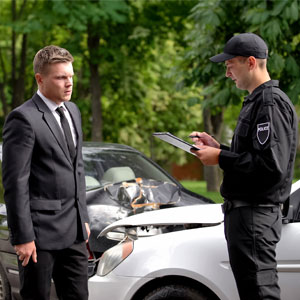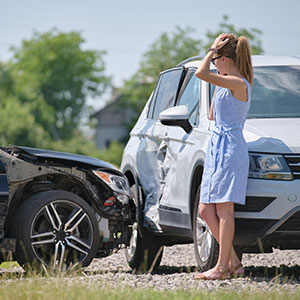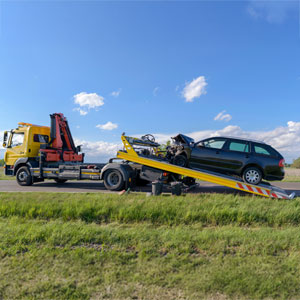Poor Headlight Performance In Small and Mid-Size SUV’s
Car AccidentsA majority of headlights in small and mid-size SUV’s were rated as “poor.” The Insurance Institute for Highway Safety (IIHS) tested 21 small SUV’s and 37 mid-size SUV’s with deficiencies found in more than half of all models tested.
Why Aren’t All Headlights The Same?
Today’s government standards for new vehicles are based on certain Department of Transportation specifications. Many of those specifications are outdated and were based on current technology at the time. Hence, government standards for headlights on new vehicles may not be adequate considering the availability of new headlight technology.
Headlights have come a long way in recent years. Many new vehicles now offer high intensity discharge (HID) and LED lighting systems. Some vehicles also offer headlights that move in proportion to the position of the steering wheel. The IIHS says that “manufacturers aren’t paying enough attention to the actual on-road performance of … basic equipment.”
The IIHS evaluated performance for straightline, sharp curves, and gradual curves. The best performing headlights of the tested vehicles was the Mazda CX-3 (Grand Touring) with curve-adaptive LED lights with high beam assist. The vehicle with the worst performance was the Honda HR-V with standard halogen bulbs. The HR-V’s low beams and high beams were rated poorly on both curves and straight ahead visibility. It is also important to mention that the HR-V cannot be purchased with any higher performing headlights than the “standard” halogens.
In the mid-size class, the Volvo XC60 was a top performer while the Ford Edge was rated as poor.
I can remember seeing advertisements many years ago for headlight manufacturers claiming that their halogen bulbs were better than others on the market at the time. While that may be true (I cannot vouch for whether it is true or not), “standard” halogen headlights just don’t work as well as newer technology with projector lenses or direct light emission.
Take A Look At Your Own Car’s Headlights
If you have “standard” halogen bulbs without projector lenses and you want to upgrade your lights, you do not have to purchase a new car. There are probably exact-fit replacement (aftermarket) headlamps that will give you more light and help you prevent a car accident from happening. For relatively modest costs, you can purchase aftermarket LED bulbs that should be able to fit into your low-beam headlight sockets that will use the reflectors inside your light housing the same way that halogen bulbs did, except that the LED bulbs will be much brighter.
You should look at ratings for the amount of light emitted (usually in the form of “lumens” but may also be measured as “foot-candles“). Regardless of the technology used or the measurement units, brighter bulbs will enable you to see better at night.
The cost to upgrade from standard halogens to an aftermarket HID system (requiring a ballast and other wiring) may be quite substantial. If you have HID bulbs, there may be upgrades to the bulbs that you can purchase for mostly reasonable costs. If you want to upgrade from HID to aftermarket LED, the cost may be substantial as well for only a possible gain in actual performance. It may be difficult to get more performance from the same headlight housing.
Glare To Other Drivers
Despite being significantly brighter, HID and LED headlights should be aimed appropriately so as to avoid blinding other drivers coming from the opposite direction. The IIHS indicates that glare is usually a result of poorly aimed headlights. The general rule of thumb for aiming headlights is to aim the driver’s side headlight slightly lower and angled to the right (passenger side). This should not be enough to cause any noticeable difference to the driver while going down the roadway but the adjustment has been noted to reduce glare for oncoming drivers. This applies to all headlight types and not just HID and LED bulbs.
Poor Headlights As A Cause Of Your Accident
With everything being said above, poor headlights (even if the IIHS rated your vehicle as “poor”) will not save you from legal liability in the event of a car accident. Better headlights are just supposed to keep you from getting into an accident in the first place. However, it is the driver’s responsibility to maintain control of their vehicle at all times and to take all reasonable measures to avoid a collision.
Car accidents in Florida are judged on a “negligence” standard. Likewise, if you hit a pedestrian (even if it is dark and foggy) because you did not see that person, then you may be found legally responsible in a court of law for the accident. This is so because arguments can be made that you should have been paying better attention to the roadway, could have used high beams, or should have slowed down so as to not “outrun” the range of your headlights.
From my experience as a personal injury attorney, just about any accident that could have been prevented with the use of better or brighter headlights is an accident that you will be held legally responsible for at least some degree. You should remember that Florida follows the “comparative fault” negligence model, meaning that each person pays for their own degree of legal responsibility for a car accident.
Better headlights just help you see better but they don’t prevent negligence. If you can’t see, you’re going to need to slow down even if you have the latest and greatest technology.
Contact A Lakeland Personal Injury Lawyer For Help With Your Case
If you or a loved one has been injured in a car accident, you should contact a Lakeland, FL car accident lawyer to see if you have a case. We represent car accident clients on a contingency fee basis, which means there are no fees or costs unless money is recovered for you. A consultation with a personal injury attorney is free.


